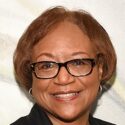Students and faculty members in the archaeology department at Columbia University, New York University, and the City University of New York have found the remains of Seneca Village, a 19th century African-American settlement in what is now Central Park in New York City. The village was located between what is now 81st and 89th Streets just east of Central Park West.
The village was founded around 1820. At the time it was about three miles north of the densely populated areas of Manhattan. In 1857, the 300 or so inhabitants were evicted so that Central Park could be constructed. There was a school and three churches in the community.
The accompanying video gives more details:












